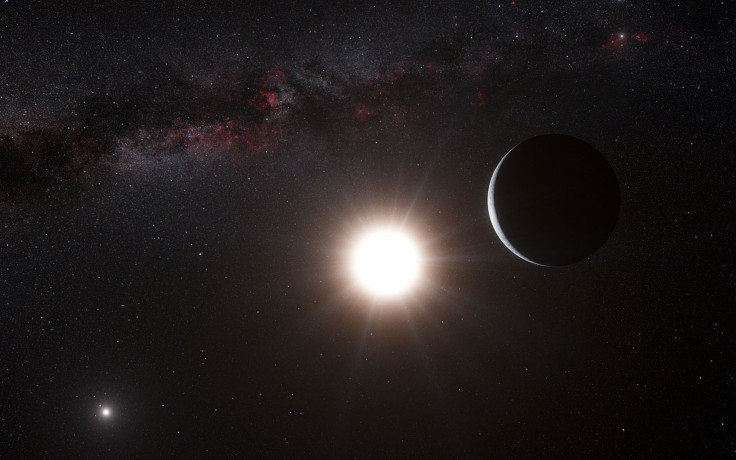Mysterious Glowing Exoplanet Found Orbiting A Star Too Far Away

An international team of astronomers has discovered, outside our solar system, a planet that has been found to be orbiting a single sun-like star from an impossibly far distance.
The exoplanet, dubbed HD 106906 b, weighs in at 11 times the mass of Jupiter and orbits its hosting star at 650 times the average distance between the Earth and the Sun. According to scientists, the exoplanet’s distance from its star makes it a unique celestial body, throwing a wrench into conventional planet formation theories.
“This system is especially fascinating because no model of either planet or star formation fully explains what we see,” Vanessa Bailey, a University of Arizona graduate student who led the research, said in a statement.
According to the existing consensus, planets close to their stars, like Earth, originate from small asteroid-like bodies born in the primordial disk of dust and gas that surrounds a forming star. But, the process happens so slowly that it cannot contribute to the formation of giant planets such as HD 106906 b, which is at an exceptionally great distance from its star.
Although there are possibilities that giant planets can form from a fast, direct collapse of disk material, primordial disks hardly ever contain enough mass in their outer reaches to allow such a planet to form. All these arguments have led astronomers to conclude that HD 106906 b should not have been where it was spotted.
The exoplanet and its hosting star are also of particular interest because researchers can still detect the remnant “debris disk” of material left over from the formation of the planet and its star.
“Systems like this one, where we have additional information about the environment in which the planet resides, have the potential to help us disentangle the various formation models,” Bailey said. “Future observations of the planet's orbital motion and the primary star's debris disk may help answer that question.”
According to astronomers, HD 106906 b is only 13 million years old and it continues to retain a glow from the residual heat of its formation. At 2,700 Fahrenheit, the exoplanet is much cooler than its host star, and it emits most of its energy as infrared light rather than visible light. Earth, on the other hand, formed 4.5 billion years ago, which makes it about 350 times older than HD 106906 b.
The scientists used the new Magellan Adaptive Optics, or MagAO, system and the Clio2 thermal infrared camera -- both developed at the Tucson-based university -- to discover the planet. The instruments were mounted on the 6.5 meter-diameter Magellan telescope in the Atacama Desert in Chile to grab the discovery image.
"Every new directly detected planet pushes our understanding of how and where planets can form," Tiffany Meshkat, a graduate student at Leiden Observatory in the Netherlands and co-investigator of the research, said. "Discoveries like HD 106906 b provide us with a deeper understanding of the diversity of other planetary systems."
© Copyright IBTimes 2024. All rights reserved.






















